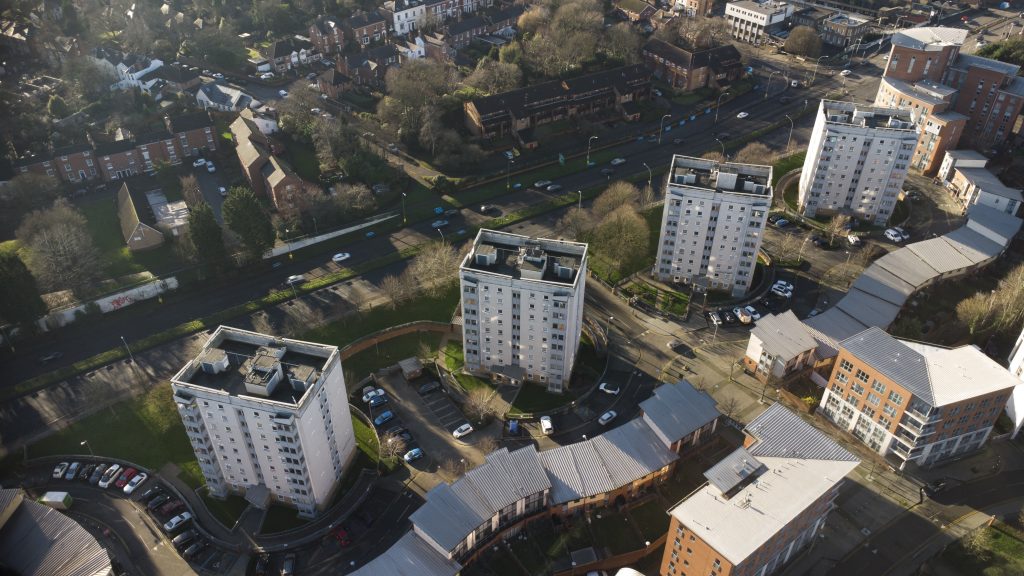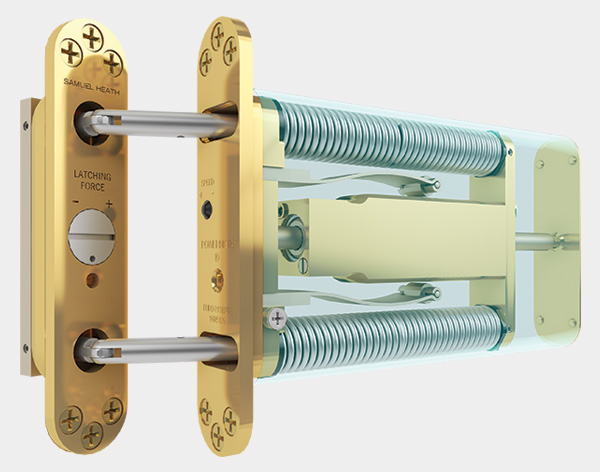The importance of fully operational fire door closers for high rise safety

The fire safety of high rise accommodation has never been far away from news headlines since the Grenfell Tower fire of 2017. While much of the focus has been on unsafe, flammable cladding, faulty or damaged fire doors and self-closing devices have also been identified as major contributory factors in the spread of the fire.
The essential role of fire doors and self-closing devices in containing a fire
Fire doors are critical to fire safety and saving lives in residential buildings. They are specifically designed to withstand fire for up to 60 minutes to prevent, or significantly slow down, the spread of flames, smoke and toxic gases. Fire doors also preserve the effective compartmentation of buildings.
A critical component of a fire door is the automatic closer. Guidance from London Fire Brigade highlights the importance of fire doors and the role of automatic closers in holding back the flames and stopping the spread of the fire and toxic smoke.

Grenfell Tower Inquiry findings regarding fire doors and self-closing devices
The Grenfell Tower Inquiry (Phase 1) report, identified that ineffective fire doors allowed smoke and toxic gases to quickly spread through the building. Faulty or damaged self-closing devices were also identified as a key contributory factor: “One important reason why fire doors failed to perform their essential function was the absence of effective self-closing devices, some of which were broken or had been disabled or removed.” Fire door closers were investigated further by the Grenfell Tower Inquiry, with findings outlined in the Phase 2 report.
The Phase 2 report confirmed that the front doors of Grenfell Tower had not met the fire resistance standards suggested by Approved Document B. In addition, “many self-closing devices on the front doors of flats in Grenfell Tower failed to work effectively and some were missing entirely.”
Fire doors and closers are now regularly inspected under fire safety regulations. According to the Fire Protection Association, it is now a legal requirement in multi-occupied residential buildings of more than 11 metres in height to “undertake quarterly inspections of fire resisting doorsets (including their self-closing devices) in the common areas, as these doors are subject to considerable use and subsequent failings or damage”.
Concealed fire door closers for multi-occupied residential buildings
Samuel Heath has been a leading name in fire door closer technology for several decades. The company has developed concealed fire door closers as a safer alternative to traditional overhead door closers.
A concealed fire door closer helps overcome the issues of damage and removal that have been identified by the Grenfell Inquiry as contributing to the failure of fire doors to perform their essential function. A damaged door closer usually results in a total failure of the fire door itself, posing a significant risk to life.
Some residents simply don’t like the look of overhead surface door closers, or the fact that their door shuts behind them automatically, so they deliberately remove them. Being in full view, surface door closers are also tempting targets for petty vandalism. In stark contrast, hidden between the door and the door frame a concealed fire door closer cannot be easily removed or vandalised by residents.
The Powermatic R100 Concealed Fire Door Closer from Samuel Heath
The Powermatic R100 concealed fire door closer from Samuel Heath is a market leader in concealed door closers. Its fire rating, robust engineering, performance and rigorous testing make it the choice of many specifiers throughout the world.
Its comprehensive fire and safety testing and certifications are as follows:
- CE Marked
- UKCA Marked
- Successfully type tested to BS EN 1154: 1997 power size 3
- BS EN 1634-1 approved for use on one hour and half-hour fire doors
- BS 476 tested for one-hour and half-hour fire doors
- Certifire approved
Being concealed within the frame of the door, the Powermatic R100 is much less likely to be removed, providing a more reliable response to fire and smoke. Its performance, quality and endurance have also been scrupulously tested to provide additional reassurance about its reduced potential for developing faults that can compromise fire safety.
Certifire: Independent Fire Safety Approval
The Powermatic R100 is the only jamb-mounted concealed door closer to have achieved Certifire approval.
Certifire is an independent, third-party passive fire product certification scheme that assures fire safety performance. It is recognised by regulatory authorities worldwide as an international mark of fire safety.
This independent accreditation from a world leading fire safety brand provides specifiers with reassurance in terms of product performance and reliability. A Certifire accreditation cannot be self-assessed and awarded by a manufacturer. It is a rigorous, independently assessed certification, that only the Powermatic R100 concealed door closer has passed.
It can be argued that as fire safety in multi-occupied residential buildings is a critical consideration for decision makers such as architects and main contractors, only Certifire approved concealed door closers should now be specified for planning applications and the construction or refurbishment of these buildings.

Specify concealed fire door closers to provide safe housing for residents
Samuel Heath welcomes enquiries from specifiers of multi-occupied residential buildings to discuss the Powermatic R100 and the benefits of concealed fire door closers.
Contact the Samuel Heath team of professionals for essential safety guidance.
Call 0121 766 4200 or email info@samuel-heath.com to discuss your concealed door closer requirements.
Samuel Heath: Keeping people and buildings safe.
